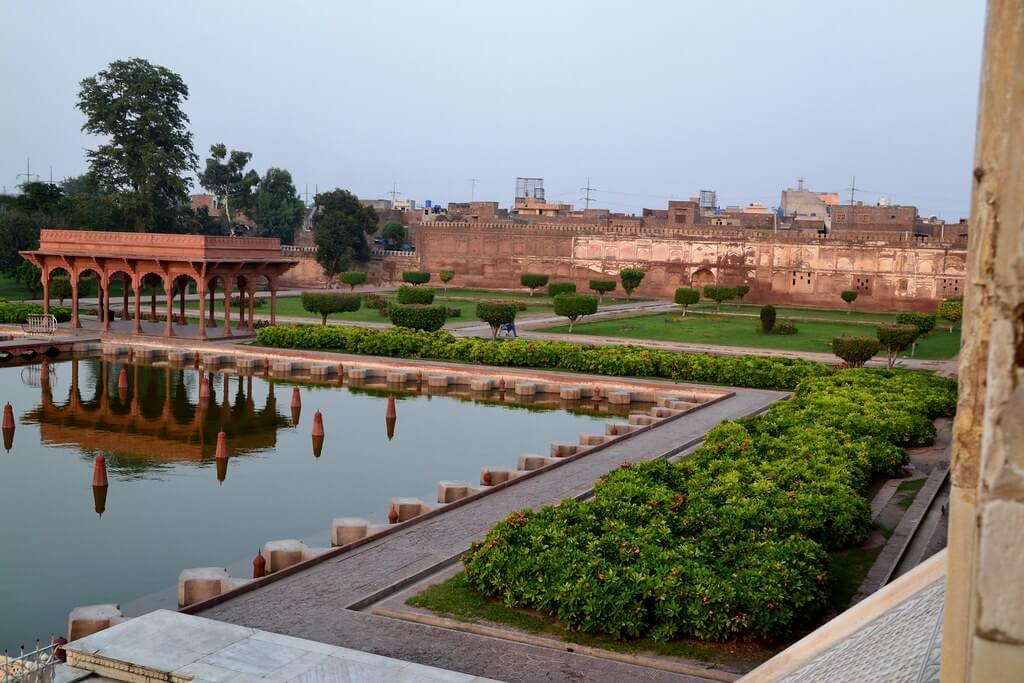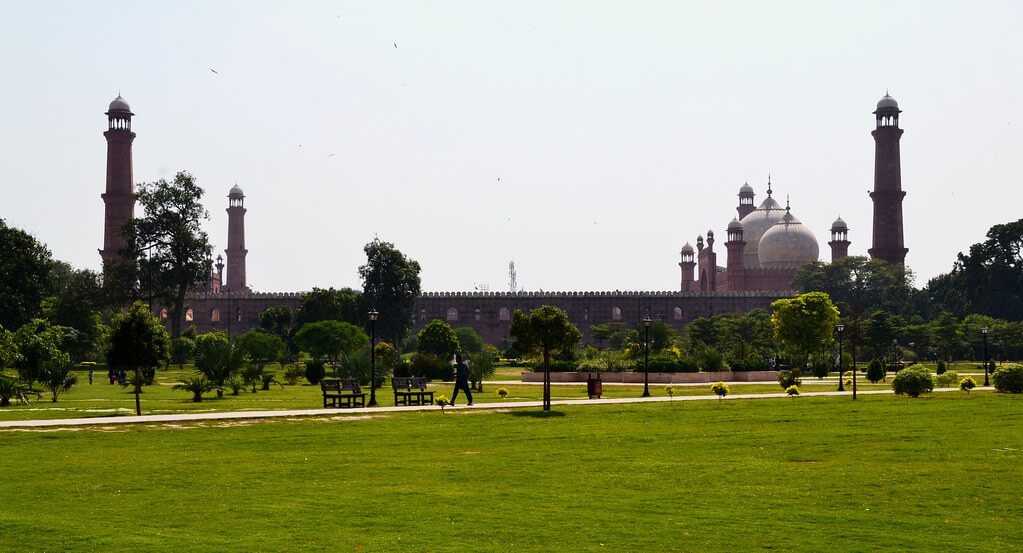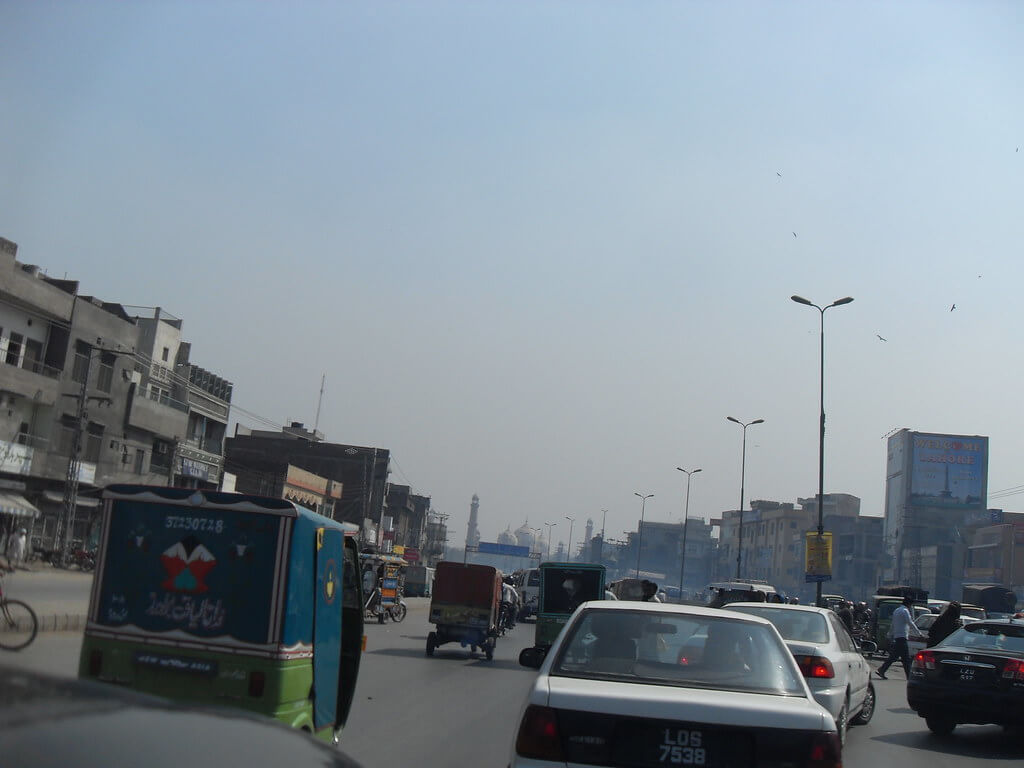Lahore
How to travel in Lahore as a tourist! Lahore is the capital of the Punjab Province and Pakistan’s second-largest metropolis. Lahore is regarded as Pakistan’s cultural center. With a population of over 13 million, Lahore is the second most populous city in Pakistan after Karachi and ranks 26th on the list of the world’s most populated cities. The city is also the country’s principal industrial, economic, and cultural center. Lahore is one of the country’s most socially liberal, progressive, and cosmopolitan cities. It is situated in the country’s northeast, close to the international border with India.
The walled or Inner City of Lahore is the city’s historic core. This historic city district is heavily inhabited and rich in cultural history. The city has a lengthy history and has served as the region’s traditional and cultural hub. It has witnessed the rise and fall of various empires, including the Mughals, the Sikhs, and the British Raj’s colonial control. Following Pakistan’s independence from British rule, Lahore remained an important metropolis. Today, Lahore is rich in cultural assets, including the Lahore Fort, the Badshahi Mosque, the tomb of Mughal Emperor Jehangir, monuments to renowned Sufi saints, and the iconic Shalimar Gardens.
Things to do in Lahore
Visit the Lahore Wagah Border
One of the most popular things to do in Lahore is to visit the Pakistan-India border at Wagah. The Wagah-Attari border crossing is well-known for its daily flag-lowering ritual and a healthy dose of nationalism on both sides. Every evening, visitors from India’s Lahore and Amritsar go to the Wagah border to see the daily flag-lowering ritual, which began in 1959. As the gathering grew, both sides saw patriotic music and nationalistic enthusiasm, which culminated in the ceremonial flag-lowering ceremony. Men from the Pakistan Rangers and India’s Border Security Force stomp their boots, kick their legs high, stare furiously into each other’s eyes, drop the country’s flag, and eventually salute and handshake before the ritual concludes.
Check out The Minar-e-Pakistan
The Minar E Pakistan is a monument that was erected between 1960 and 1968 on the spot where on March 23, 1940, the All-India Muslim League passed the Lahore Resolution, popularly known as the Pakistan Resolution. The monument is located in Lahore’s famed Iqbal Park, one of the country’s major urban parks. A Russian-born Pakistani architect and civil engineer developed the skyscraper in Mughal/Islamic and contemporary architecture. The tower base is fashioned like a flower, and the minaret contains steps and a lift to the top, where you can enjoy panoramic views of the surrounding region. The area around the monument is densely packed with well-kept gardens and flower beds. The venue is often utilized for political and religious gatherings.
Visit the beautiful Shalimar Gardens
Lahore’s Shalimar Garden is a UNESCO World Heritage Site. It was built in 1641 by Mughal Emperor Shah Jahan and is also known as the Emperor’s Garden. This beautiful Garden, set on 80 acres, showcases the legendary architectural abilities of Mughal architects. The Shalimar grounds are beautiful green grounds with fruit orchards, big decorative ponds, exquisite Mughal architecture, and over 400 fountains. The Shalimar Garden is also an excellent location for a family picnic in Lahore. It also contains three terraces: Hayat Baksh, Faiz Baksh, and Farah Baksh. The first terrace was used for public addresses, the second for private audiences, and the third for the elite royal family.
Top Attractions in Lahore
Badshahi Mosque
The Badshahi Mosque is one of the most beautiful specimens of Mughal and Islamic architecture in India. This mosque, erected in 1674 by Mughal Emperor Aurangzeb, is one of the most renowned in the world. The mosque, built completely of red sandstone, also includes unique relics of the Prophet Muhammad, his daughter, and his son-in-law. The mosque’s exterior is made of carved red sandstone with marble inlay. During the reign of Maharaja Ranjit Singh in 1799, the courtyard of the mosque was utilized as a stable and the cells as soldiers’ barracks. The mosque was also utilized as a fortress by the British Raj after they gained control of Lahore in 1852. Later, the Badshahi Mosque Authority was formed, and the mosque was reopened as a place of worship.
The Lahore Fort
The Lahore Fort, also known as the Shahi Qila, is a beautiful example of Mughal architecture and fortification. This medieval fort was erected in the 11th century by the renowned Mahmood of Ghazni. Within the Lahore Fort, there are various gardens, palaces, halls, mosques, and other buildings and constructions. The Palace of Mirrors (Sheesh Mahal) is another attraction at the Fort. The current form and structure of the fort originate from 1575 when Mughal Emperor Akbar held the location to secure the Mughal Empire’s northwest boundary. The Fort also has many minor museums, including a medieval-era armaments display, rare oil paintings, and Mughal-era manuscripts.
Lahore Museum
The Lahore Museum is one of the greatest sites to learn about the city and the country’s history. The museum was created in the 18th century and houses relics from the Indus Valley Civilization, including exhibits from Mohenjodaro and Harappa, two of the most well-documented Indus Valley sites. The museum also contains around 20 galleries that display several precious holy Qurans, paintings, Gandharan sculptures, carpets, manuscripts, Islamic artworks, and other important items. In India, the museum also has exhibits from the Hindu Shahi monarchs, the Mughal Empire, the Sikh Empire, and the British Raj.
How to Get Around in Lahore
Public transport
Lahore’s public transport system includes a MetroBus line, a Metro Rail line that has yet to open, a network of SpeedO cross-city buses, and a network of Lahore Transport Company (LTC) buses and minibusses. SpeedO buses often connect the outer areas, and LTC offers a feeder service, but MetroBus and Metro Rail are the primary alternatives for passengers.
When the ‘Orange Line’ Metro Rail opens in 2019, visitors lodging on Mall Road will be able to ride a train to Lake Road station and then transfer to the MetroBus to Azadi Chowk to reach the Walled City tourist district.
Until then, it’s probably not worth dealing with the MetroBus; the rickshaw fee to the MetroBus station is equivalent to the fare to be dropped straight within the Walled City.
If you’re staying in Gulberg, take a rickshaw to the Kalma Chowk MetroBus stop and then the MetroBus to Azadi Chowk.
The MetroBus runs seven days a week from 6:15 a.m. to 10 p.m., except on days when security is tightened (such as the 9th and 10th of Muharram). When it opens, the Orange Line Metro Rail is scheduled to have comparable hours.
Autorickshaws and qingqi rickshaws
Autorickshaws, which are common throughout the subcontinent, dependably ply the streets of Lahore. While rickshaws may not have the most honest drivers (expect to be billed nearly double the right amount for most rides), they are nevertheless one of the most handy and cost-effective methods to get transported directly to your location. To get an indication of how much they should cost, use the Uber or Careem applications to get the fare to your destination, then plan to spend somewhat extra.
So, why would you use a rickshaw when you can use an app? Sometimes rickshaws are simply sitting there, ready to go, whereas the nearest rickshaw in the app is kilometers distant or even unavailable during peak hours. A rickshaw ride from Mall Road to the Walled City should cost between Rs. 100 and Rs. 200, and the same to Gulberg. Expect to cost around Rs. 300 to get from Gulberg to the Walled City. Qingqi (pronounced ‘ching-chi’) trailers are strapped onto the back of a motorcycle with seats facing both backward and forwards. They are nearly usually extremely loud, and the passengers are seated perilously close to the road surface. They’re known for being risky, less expensive alternatives to rickshaws.
Taxis, Uber, and Careem
Taxis are not as common in Lahore as they are in many other major cities throughout the world. Private charter cab firms have offices at the airport and are the safest method to go from the airport to the city. Expect to pay between Rs. 600 and Rs. 1000, depending on the time of day, the size of the car, and the location of the drop-off.
Uber and Careem are prominent ride-hailing applications that let users locate rides in vehicles, luxury automobiles, autorickshaws (not qingqi rickshaws), and motorbikes. On the motorcycles, bring your helmet. Before the voyage, fare estimates are provided, and payment is made in cash. Careem allows passengers to contribute any change to their account, which will be applied to their next journey. Prices are raised at times of strong demand (also known as “surge pricing” or “load factor”).




